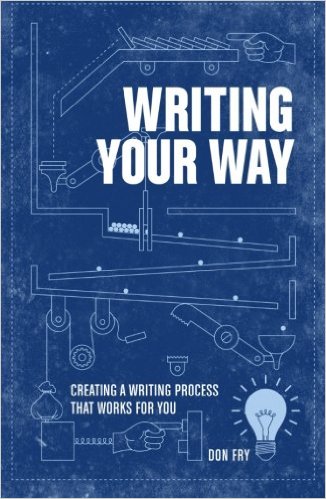Are you a Planner or Plunger?
“One of the horrors of the writer’s life is sitting at your keyboard not knowing what to say,” this sentence hooked me, this is exactly how I feel every time I have to write!
Don Fry in “Writing Your Way,” analyzes the writers, classifies them and guides each type. Fry is a writing coach, a writing teacher and a freelancer writer. He aimed the book at nonfiction writers who are not journalists.
The book is in Q & A style, he raises a question, intrigue you by the question, and then provides you with a detailed process to the solution, sometimes a step-by-step one.
One of the main questions of the book: “Are you a planner or plunger?” Fry classified the writers into these two types. I discovered according to Fry’s analysis that I am a plunger! “Planners plan and execute their plan.” “Plungers just start typing and organize toward the end.”
Fry is a planner himself, therefore the book is organized in stages or as he said in the book as blocks and boxes. He describes the writing process in 5 stages: massaging the idea, gathering stuff, what to say and how, getting it down, and getting it right.
“Here’s the problem for plungers: The world of writing is ruled by planners,” but he said that the solution for this problem is to draft without revising because this way will save much time.
Furthermore, he advices the planners and the plungers to use “debriefing.” It is a method of stating what you want to say and what your article is about. In “Feature & Magazine writing” and “The art and craft of feature writing”, all advised that this should be stated in one sentence, use this sentence as the lead and the main pitch sentence in the query letter.
I was surprised by his proof that the lead is not the hook, “the research shows that readers enter a package in this order: photo, title, photo caption, and beginning. In that fourth position, beginnings aren’t hooks.”
At the beginning of the book, Fry recommended reading the book in sequence, but I never do that. I jump between books’ chapters (this is a bad habit, don’t do itJ) and read several books at the same time. So as usual, I jumped to the chapter of “Creating your own voice,” I liked the persona, and how he demonstrated creating the voice. He stated three ways to build a voice with the pros and the cons of each: just let it happen, imitate other writers, and design it from a device. I liked his examples and his demonstration because I wrote fiction and used some of these methods unconsciously. I discovered that I need to owe more my devices to sound exactly the pitch I aim.
I like the book, I like his calm and relaxing tone. Moreover, I found myself in it, as if he was inside my head and described how I think, analyze, and write. In this book, Fry demonstrated that he has hands on training. Whether you are planner or plunger, you will find nice guidelines in the book.

